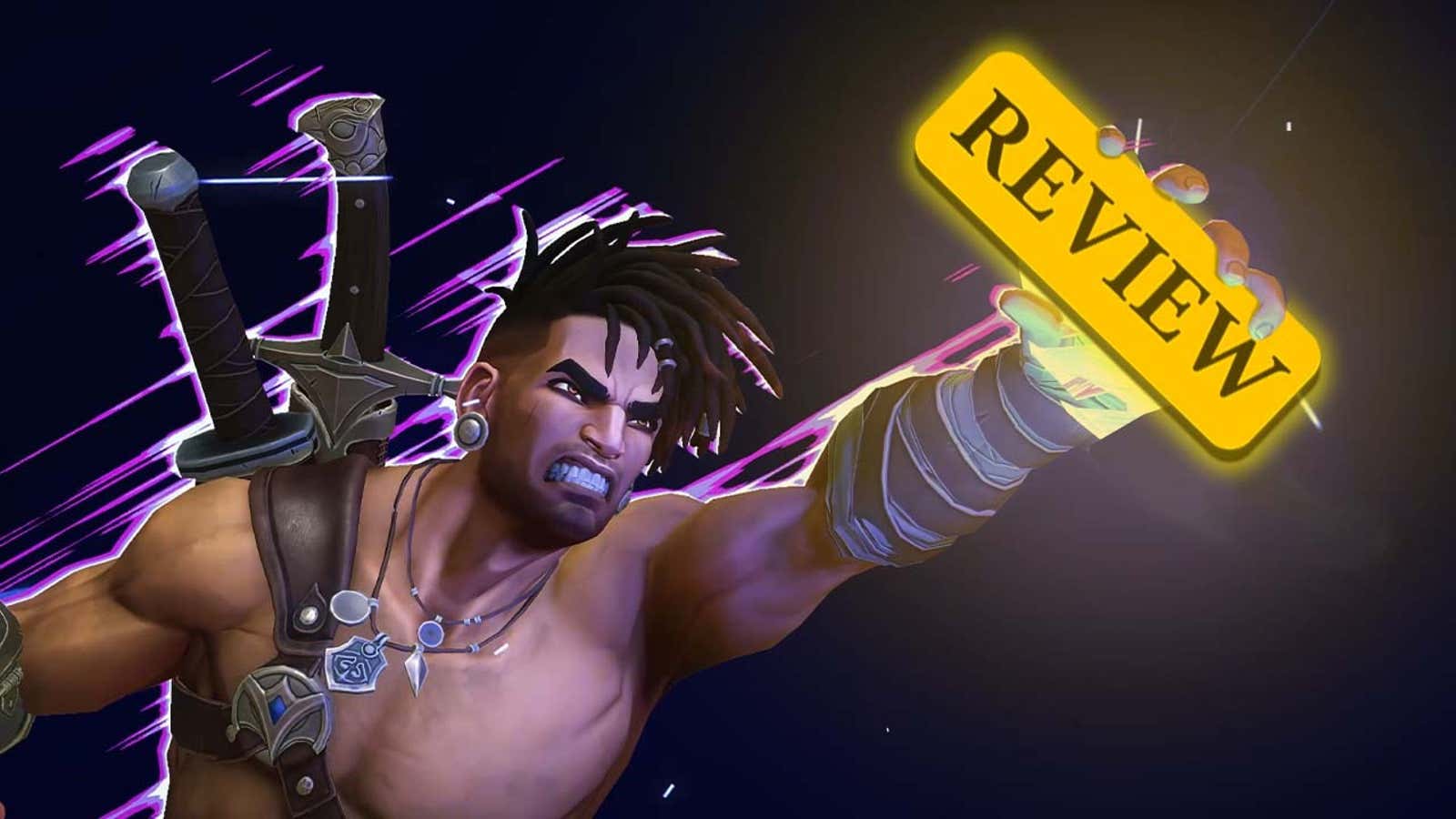I hit a roadblock about three-fourths of the way through Prince of Persia: The Lost Crown. There was a frustrating platforming section that required I dash and jump through hazardous obstacles: thorny spinning wheels, spiked pits and walls, falling platforms, and invisible auras that shot out magenta arrows. I can’t tell you how many times I died here. But in a moment of exasperation, I flipped through the settings menu to find an accessibility feature that let me skip some of the more punishing platforming areas, and let me tell you, it was so damn helpful.
Metroidvanias are often associated with intense difficulty and precision. That means they aren’t always the most accessible games. A portmanteau of the ‘80s games Castlevania and Metroid, they demand patience and persistence, as well as quick reflexes and a vivid memory to make it through. With The Lost Crown, developer Ubisoft Montpellier proves that Metroidvanias can be approachable to more players without compromising on the genre’s ethos. And honestly, it’s my favorite Metroidvania out right now.
Palace intrigue
Prince of Persia: The Lost Crown follows Sargon, a young soldier who’s part of the elite warrior clan known as The Immortals. The group is tasked with ensuring that Prince Ghassan can ascend to the throne. Things quickly go awry as the budding prince is abducted and taken to the cursed city of Mount Qaf, which is locked in a tumultuous time loop. With his twin swords and the help of The Immortals, it’s up to Sargon to find Ghassan and dispel Mount Qaf’s curse.
Though it has a slow start, the narrative offers plenty of intrigue as you uncover the secrets of the throne and the prince’s lineage. There’s some betrayal as characters you trust turn their backs. There’s even some hope as Mount Qaf denizens, long resigned to a Groundhog Day kinda life, put their faith in Sargon’s quest to rescue Ghassan and eradicate the city’s curse. It’s a story about ambition, duplicity, regret, and the lengths one will go for power, which culminates in some impressive—and even heartbreaking—revelations. I was almost moved to tears when Prince of Persia: The Lost Crown’s credits finally rolled after roughly 22 hours, a testament to the game’s impactful and sharp writing.
The combat and exploration moved me, too. Prince of Persia: The Lost Crown features perilous platforming, interconnected levels, hidden walls and secrets, upgradeable gear, and an assortment of time-bending powers to find that’ll help you on your journey. It all starts simple enough. You’re given just a handful of attack and traversal abilities before the game ratchets things up with new skills. The pacing makes traipsing through Mount Qaf feel engaging and rewarding, especially as you use these powers during the many fights you’ll find yourself in.
Combat—and, in particular, the bosses—is where Prince of Persia: The Lost Crown shines. Enemies run the gamut from agile to tanky, but every single one is cunning in their own way. Very rarely do foes stand around and wait for you to thin out their numbers, making each encounter deadly and tense. Bosses are (mostly) one-on-one affairs and a spectacle to behold, each with their own attack patterns, gimmicks, and phases. A few really tried my patience. But a forgiving checkpoint system takes the pressure off frequent deaths and risky exploration, so getting revenge is always in reach.
A helping hand
Not everything is in reach when playing The Lost Crown, though. As you maneuver through Mount Qaf’s gorgeously rendered biomes, you’ll find plenty of collectibles and resources that you can’t quite get to. Aside from moments when you absolutely need a new skill, the game presents you with a bevy of thoughtful options to simplify gameplay. These include a guided mode that provides clear icons for where to go, a platforming assist feature, and completely customizable difficulty sliders for things like enemy damage and health. Prince of Persia: The Lost Crown sets a high bar for the Metroidvania genre when it comes to the freedom of customizing your experience.
Nowhere is this fact more underscored than in the Eye of the Wanderer, a quest item that operates as both a mini-map and a screenshot tool that makes backtracking a breeze. No longer do you have to simply remember where things are on the map. Instead, you can take a photo of a particular place and view that screenshot whenever you want to return. It’s a feature I hope more Metroidvania games steal in the future.

The Eye of the Wanderer is also a perfect opportunity to admire Prince of Persia: The Lost Crown’s beautiful world. From dilapidated statues to overgrown caverns and mountains, each area is distinct from the others in interesting ways. The parallax scrolling effect gives the background movement as you sprint from one spot to the next, and the environmental details provide life to a forgotten city. It’s clear there’s care put into this world, especially when characters take notice of the actions you’ve taken throughout your journey.
Prince of Persia: The Lost Crown is an exceptional Metroidvania that’s as accessible as it is punishing. It’s an impressive accomplishment, one that exemplifies how approachable doesn’t mean dumbed down. I’ve certainly had my fair share of frustrations during my multiple hours with it, but I’ve also come away from The Lost Crown feeling more excited about the genre than I have been in a long time.
.






